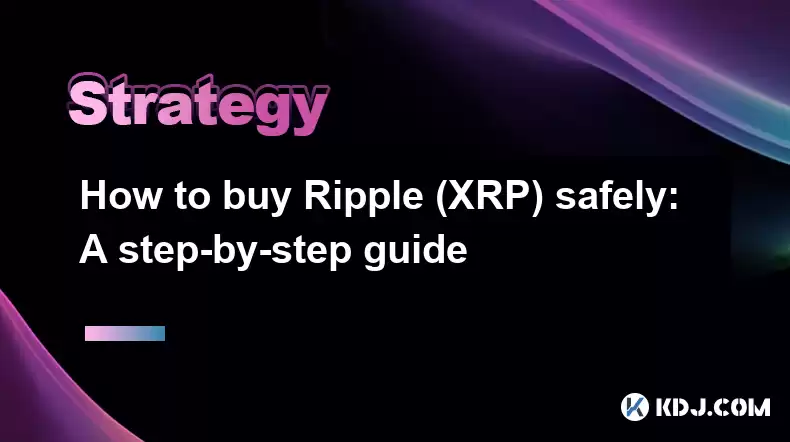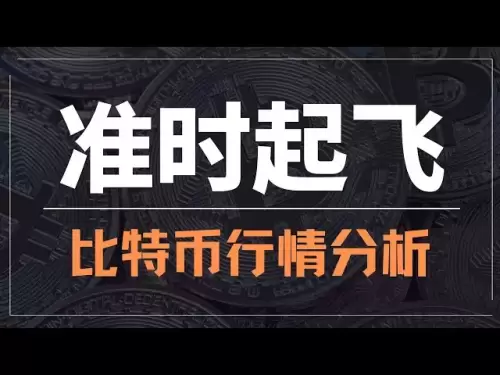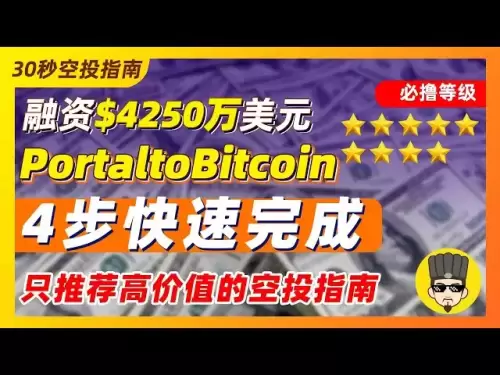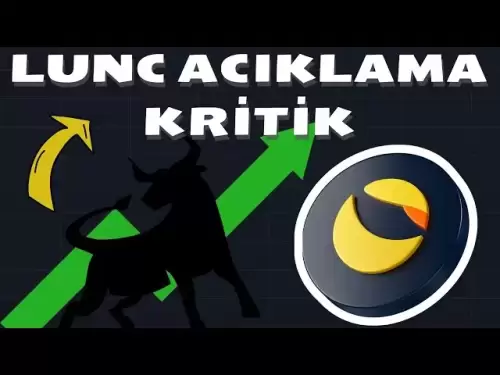-
 Bitcoin
Bitcoin $117300
1.93% -
 Ethereum
Ethereum $3866
5.21% -
 XRP
XRP $3.109
3.81% -
 Tether USDt
Tether USDt $1.000
0.01% -
 BNB
BNB $781.5
1.52% -
 Solana
Solana $173.0
2.95% -
 USDC
USDC $0.9998
0.00% -
 Dogecoin
Dogecoin $0.2181
6.31% -
 TRON
TRON $0.3403
0.93% -
 Cardano
Cardano $0.7683
3.91% -
 Hyperliquid
Hyperliquid $40.08
5.09% -
 Sui
Sui $3.742
7.38% -
 Stellar
Stellar $0.4152
4.69% -
 Chainlink
Chainlink $18.40
10.03% -
 Bitcoin Cash
Bitcoin Cash $580.6
2.21% -
 Hedera
Hedera $0.2543
4.25% -
 Ethena USDe
Ethena USDe $1.001
-0.01% -
 Avalanche
Avalanche $22.94
3.52% -
 Litecoin
Litecoin $121.8
2.24% -
 UNUS SED LEO
UNUS SED LEO $8.955
-0.41% -
 Toncoin
Toncoin $3.330
3.03% -
 Shiba Inu
Shiba Inu $0.00001270
2.97% -
 Uniswap
Uniswap $10.34
6.42% -
 Polkadot
Polkadot $3.805
3.86% -
 Dai
Dai $1.000
0.01% -
 Bitget Token
Bitget Token $4.429
1.80% -
 Cronos
Cronos $0.1495
4.65% -
 Monero
Monero $255.6
-9.08% -
 Pepe
Pepe $0.00001096
4.40% -
 Aave
Aave $282.9
7.85%
How to buy Ripple (XRP) safely: A step-by-step guide
To buy XRP safely, understand its use, choose a reputable exchange like Coinbase or Binance, secure your account with 2FA, and consider using a personal wallet for storage.
Apr 10, 2025 at 05:49 pm

Buying Ripple (XRP) safely involves understanding the cryptocurrency, choosing a reputable exchange, and following secure practices to protect your investment. This guide will walk you through each step to ensure you can acquire XRP with confidence and security.
Understanding Ripple (XRP)
Ripple (XRP) is a cryptocurrency that was created to facilitate fast and low-cost international money transfers. Unlike many other cryptocurrencies, XRP is not mined; instead, all 100 billion XRP were created at the launch of the network. Ripple Labs, the company behind XRP, aims to improve the efficiency of financial transactions across borders.
Before you proceed with buying XRP, it's essential to understand its use cases and the risks involved. Research the current market trends, regulatory news, and any potential legal issues surrounding Ripple to make an informed decision.
Choosing a Reputable Exchange
To buy XRP, you need to use a cryptocurrency exchange. Choosing a reputable exchange is crucial for the safety of your investment. Some well-known exchanges that support XRP include Coinbase, Binance, and Kraken. Each has its own set of features, fees, and security measures.
- Coinbase is popular for its user-friendly interface and strong security measures, making it suitable for beginners.
- Binance offers a wide range of trading pairs and lower fees, which can be attractive for more experienced traders.
- Kraken is known for its advanced trading features and robust security protocols.
When selecting an exchange, consider factors such as security features, user reviews, fees, and the ease of use of the platform.
Setting Up an Account
Once you have chosen an exchange, the next step is to set up an account. Here's how you can do it:
- Visit the exchange's website and click on the "Sign Up" or "Register" button.
- Fill in your personal information, including your name, email address, and a strong password.
- Complete the verification process, which usually involves submitting a government-issued ID and proof of address. This step is necessary to comply with anti-money laundering (AML) and know-your-customer (KYC) regulations.
- Once your account is verified, you can log in and start trading.
Securing Your Account
Securing your account is vital to protect your investment from hackers and unauthorized access. Here are some steps you can take:
- Enable two-factor authentication (2FA) on your account. This adds an extra layer of security by requiring a second form of verification, such as a code sent to your mobile device, when logging in.
- Use a strong, unique password for your exchange account, and avoid using the same password across multiple platforms.
- Be cautious of phishing attempts. Always verify the URL of the exchange before entering your login information, and never share your credentials with anyone.
- Regularly update your security settings and keep your devices free from malware.
Depositing Funds
To buy XRP, you need to deposit funds into your exchange account. Most exchanges accept deposits via bank transfer, credit/debit card, or other cryptocurrencies. Here's how you can deposit funds:
- Log in to your exchange account and navigate to the "Deposit" or "Wallet" section.
- Choose your preferred deposit method. For example, if you are using a bank transfer, you will need to provide your bank details and the amount you wish to deposit.
- Follow the instructions provided by the exchange to complete the deposit. This may involve confirming the transaction through your bank or entering your credit card details.
- Once the funds are credited to your exchange account, you can proceed to buy XRP.
Buying XRP
Now that you have funds in your exchange account, you can buy XRP. Here's how to do it:
- Navigate to the trading section of the exchange and search for the XRP trading pair you want to use (e.g., XRP/USD or XRP/BTC).
- Enter the amount of XRP you want to buy and review the total cost, including any fees.
- Confirm the order. Depending on the exchange, you may have the option to place a market order (which executes immediately at the current market price) or a limit order (which executes only when the price reaches your specified level).
- Once the order is executed, the XRP will be credited to your exchange wallet.
Withdrawing XRP to a Personal Wallet
For long-term storage, it's recommended to withdraw your XRP to a personal wallet. This reduces the risk of losing your funds if the exchange is hacked. Here's how to do it:
- Choose a reputable XRP wallet. Options include hardware wallets like Ledger or software wallets like Toast Wallet.
- Set up your wallet according to the provider's instructions. This usually involves downloading the wallet software or connecting your hardware wallet to your computer.
- In your exchange account, navigate to the "Withdraw" section and select XRP as the cryptocurrency you want to withdraw.
- Enter the destination address of your personal wallet and the amount of XRP you want to withdraw.
- Review the transaction details and confirm the withdrawal. The XRP will be sent to your personal wallet, and the transaction may take a few minutes to complete.
Frequently Asked Questions
Q: Can I buy XRP directly with fiat currency?
A: Yes, some exchanges like Coinbase allow you to buy XRP directly with fiat currency such as USD or EUR. However, the availability of this option may depend on your location and the exchange's policies.
Q: How long does it take to buy XRP?
A: The time it takes to buy XRP can vary depending on the deposit method and the exchange's processing times. Bank transfers can take a few days, while credit card deposits are usually faster. Once your funds are in your exchange account, buying XRP is typically instant.
Q: Is it safe to store XRP on an exchange?
A: While exchanges have security measures in place, storing large amounts of XRP on an exchange is not recommended. Exchanges can be vulnerable to hacks, and you have less control over your funds. It's safer to transfer your XRP to a personal wallet for long-term storage.
Q: What are the fees associated with buying XRP?
A: Fees can vary depending on the exchange and the payment method you use. Typically, you will encounter deposit fees, trading fees, and withdrawal fees. Always check the fee structure of the exchange before making a transaction.
Disclaimer:info@kdj.com
The information provided is not trading advice. kdj.com does not assume any responsibility for any investments made based on the information provided in this article. Cryptocurrencies are highly volatile and it is highly recommended that you invest with caution after thorough research!
If you believe that the content used on this website infringes your copyright, please contact us immediately (info@kdj.com) and we will delete it promptly.
- Bitcoin Reserve, Gold Revaluation, Congress Considers: A New Era for US Financial Strategy?
- 2025-08-08 04:30:12
- KAITO's Momentum: Can It Reclaim Support Amidst Social Media Scrutiny?
- 2025-08-08 04:30:12
- Pi Coin's dApp and AI Potential: Building a Decentralized Future
- 2025-08-08 02:30:12
- Ruvi AI Takes the Lead: Outshining Dogecoin on CoinMarketCap
- 2025-08-08 02:50:12
- Cryptos Under $1: Is Ripple Still the King?
- 2025-08-08 03:50:12
- Cold Wallet, Bonk Price, ICP Price: Navigating the Crypto Landscape in 2025
- 2025-08-08 03:56:12
Related knowledge

How to avoid common crypto investment mistakes?
Jul 13,2025 at 01:35am
Understanding the Risks of Crypto InvestmentInvesting in cryptocurrency can be highly rewarding, but it also comes with significant risks. One of the ...

What is a long-short crypto strategy?
Jul 15,2025 at 10:56am
Understanding the Basics of a Long-Short Crypto StrategyA long-short crypto strategy is an investment approach where traders simultaneously take long ...

What is a long-short crypto strategy?
Jul 11,2025 at 01:28pm
Understanding the Basics of Long-Short Crypto StrategyA long-short crypto strategy is an investment approach where traders take both long and short po...

How to use the RSI indicator for crypto?
Jul 12,2025 at 03:56pm
Understanding the RSI Indicator in Cryptocurrency TradingThe Relative Strength Index (RSI) is a momentum oscillator used to measure the speed and chan...

Is copy trading a good strategy for crypto beginners?
Jul 12,2025 at 08:28am
Understanding Copy Trading in the Cryptocurrency MarketCopy trading is a strategy where novice traders replicate the trades of experienced investors a...

How to build a crypto portfolio with $1000?
Jul 13,2025 at 08:14pm
Understanding the Basics of Cryptocurrency InvestmentBuilding a crypto portfolio with $1000 starts with understanding the fundamentals of cryptocurren...

How to avoid common crypto investment mistakes?
Jul 13,2025 at 01:35am
Understanding the Risks of Crypto InvestmentInvesting in cryptocurrency can be highly rewarding, but it also comes with significant risks. One of the ...

What is a long-short crypto strategy?
Jul 15,2025 at 10:56am
Understanding the Basics of a Long-Short Crypto StrategyA long-short crypto strategy is an investment approach where traders simultaneously take long ...

What is a long-short crypto strategy?
Jul 11,2025 at 01:28pm
Understanding the Basics of Long-Short Crypto StrategyA long-short crypto strategy is an investment approach where traders take both long and short po...

How to use the RSI indicator for crypto?
Jul 12,2025 at 03:56pm
Understanding the RSI Indicator in Cryptocurrency TradingThe Relative Strength Index (RSI) is a momentum oscillator used to measure the speed and chan...

Is copy trading a good strategy for crypto beginners?
Jul 12,2025 at 08:28am
Understanding Copy Trading in the Cryptocurrency MarketCopy trading is a strategy where novice traders replicate the trades of experienced investors a...

How to build a crypto portfolio with $1000?
Jul 13,2025 at 08:14pm
Understanding the Basics of Cryptocurrency InvestmentBuilding a crypto portfolio with $1000 starts with understanding the fundamentals of cryptocurren...
See all articles

























































































